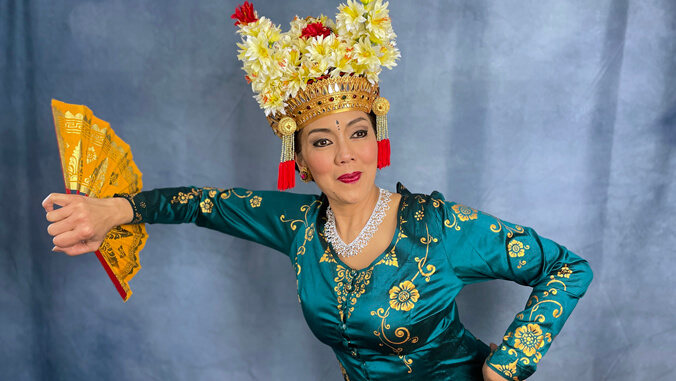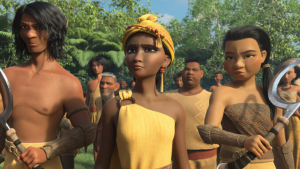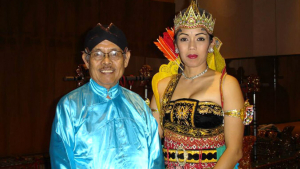
Javanese and Balinese gamelan (traditional ensemble consisting of an array of bronze instruments; drums, strings and flute) are like parents to Emiko Saraswati Susilo, creating a sense of security and feeling of home. Walt Disney Animation Studios sought the University of Hawaiʻi at Mānoa Asian studies alumna’s skilled artistry and expertise for the 2021 Southeast Asian-inspired, computer animated action-adventure film Raya and the Last Dragon.

Featuring the voices of actresses Sandra Oh, Awkwafina and Kelly Marie Tran, Raya is about a titular warrior princess who seeks out a fabled last dragon in the hopes of banishing evil spirits known as the Druun from the land of Kumandra. Susilo served as a cultural consultant on the Academy Award-nominated film and worked with animators on elements such as character facial expressions and body positions.
“I feel deeply honored to have been entrusted with the responsibility and in complete awe of the many people who are geniuses in this area and who are working hard to create a more balanced ecosystem in the film industry,” she explained.

Susilo, a voice actor in Los Angeles, is a masterful musician and dancer having trained under her mother Judy Mitoma and late father Hardja Susilo, who was the longtime director of the UH Mānoa Gamelan Ensemble, which performed Javanese music and dance. She and her husband Dewa Berata led a gamelan and kecak (form of Balinese Hindu dance and music drama) workshop for animators and also discussed traditional clothing. She also organized a pre-production trip to Bali so producers could visit sacred sites and ceremonies and deeply stressed to the crew the importance of approaching the region with an abundance of humility and respect.
Connecting back

On September 27, Susilo spoke about her experience on the film in a virtual talk sponsored by the UH Mānoa Center for Southeast Asian Studies and the Academy for Creative Media in the College of Arts, Languages and Letters. She explained how she had to be firm with animators about portions of the film that she felt weren’t culturally appropriate.
“I would pause and realize I was maybe going to alienate a whole bunch of people at Disney. For a voice actor, that feels like professional suicide,” Susilo explained. “However, my responsibility to my culture and ancestors is more important. So I spoke honestly. And each time, I was met with respect and gratitude. Don’t be afraid to speak your truth. Do it respectfully, and in an appropriate manner and time. But don’t be afraid to speak it.”
It’s been seven years since Susilo, a mother of two, lost her father, and she thinks of him daily, especially the moments when they’d walk down the path to the UH Mānoa music department together to the gamelan room. Memories she refers to now as sacred. His deep love for dance and culture passed down to her, a cloak of eminent knowledge tightly bound and carried with great responsibility.

